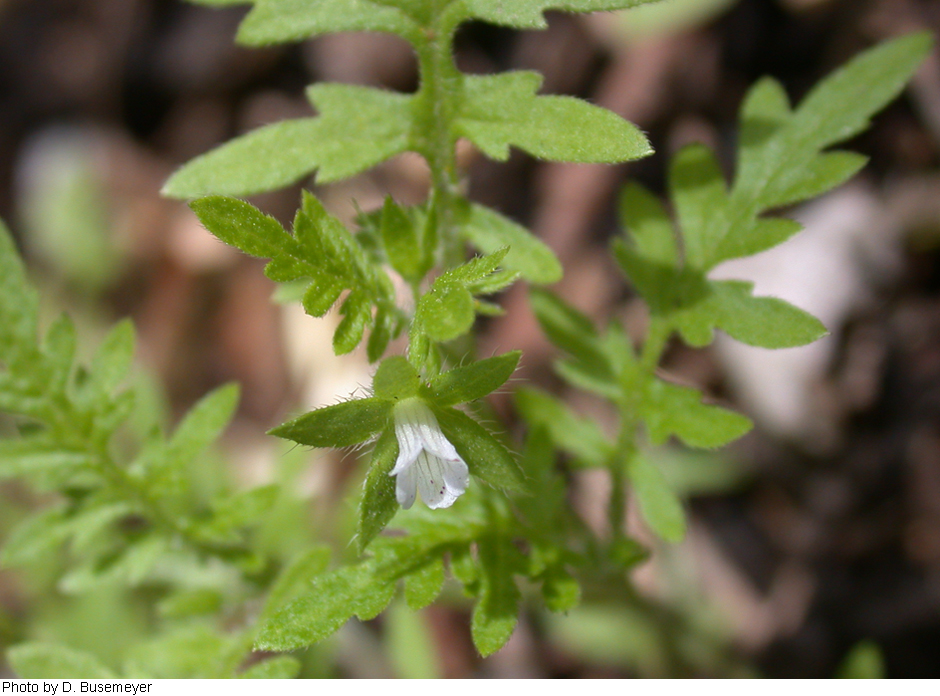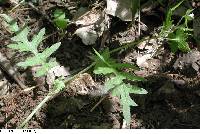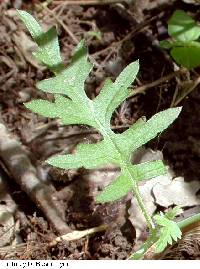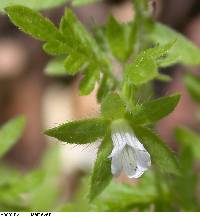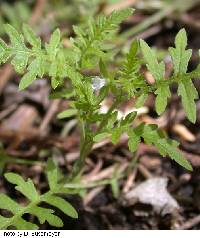Annual herb 5 - 40 cm tall
Stem: delicate, weak, usually freely branched, sparsely covered with appressed hairs, or sometimes also with stiff hairs.
Leaves: obviously stalked, at least the lower leaves opposite, the upper becoming alternate, up to 6 cm long and 5 cm wide, with a pointed, coarsely toothed apex, and the rest of the leaf deeply divided into three to six pairs of somewhat inversely lance-shaped, few-toothed, lateral segments. Leaf stalks with slender, bristly hairs at the base.
Flowers: whitish to lavender, small (about 1 cm long), radially symmetric, cylinder-shaped, and solitary on short stalks (under 1 cm long) opposite the leaves or in the leaf axils.
Sepals: five, about 1 cm long overall, but fused at very base, then separating into erect, leaf-like, veiny, egg- or lance-shaped lobes with pointed tips.
Petals: five, 5 - 8 mm long overall (shorter than or equaling sepals in length), but fused for over half their length, then separating into slightly flared, blunt lobes.
Stamens: five, attached to inside of the petal tube, alternate with the petal lobes, and short (never extending beyond the petal tube).
Pistil: with a single-chambered, superior ovary; and one style, which splits into two stigmas at the tip.
Fruit: a hanging, long-stalked (stalk up to 5 cm long), two-valved, single-chambered capsule, which is subtended by the enlarged, spreading sepal lobes.
Seeds: usually four, finely veined, 2.5 - 3 mm long.
Similar species: Ellisia nyctelea is the only species in its genus (monotypic). In the Chicago Region, this genus can be distinguished from other members of the Hydrophyllaceae family because it has single, axillary flowers with short stamens (not extending beyond the petals), and very long sepals (as long or longer than the petals).
Flowering: April to early June
Habitat and ecology: Fairly common in rich low woods, floodplains, or even moist, shaded, disturbed soils.
Occurence in the Chicago region: native
Etymology: Ellisia is named for John Ellis, a distinguished naturalist and correspondent of Linnaeus in the mid- and late 1700's. Nyctelea means nocturnal.
Author: The Field Museum

